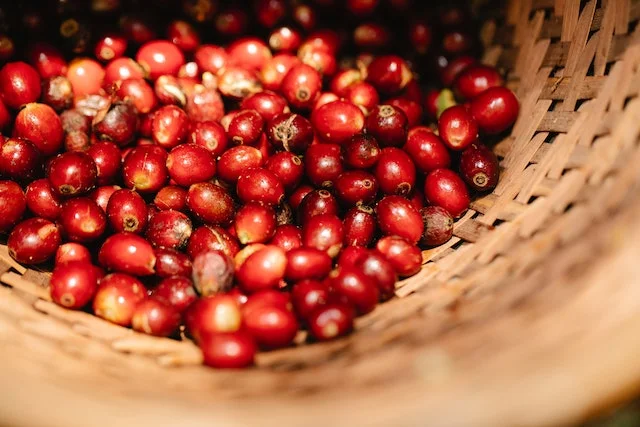Coffee Waste as Biomass Energy
Introduction
Coffee is one of the most popular beverages globally, with over 400 billion cups consumed every year. The coffee industry has boomed in recent decades to meet rising demand. However, one issue that has arisen is the massive amount of waste generated during coffee production, processing, and brewing. This waste ends up in landfills, releasing potent greenhouse gases as it decomposes. There is an urgent need to find sustainable solutions for dealing with coffee waste. One promising option is to utilize this waste as a source of renewable biomass energy through conversion technologies. This post will explore how vast quantities of coffee grounds, husks, and other residues can be turned into biomass feedstock for clean energy generation.
The Coffee Industry and Waste Generation
Coffee is cultivated in over 70 countries, with Brazil, Vietnam, Colombia, and Indonesia being the largest producers. The global coffee industry generates over $200 billion in revenue annually. However, it also produces millions of tons of waste each year. The three stages of coffee production that generate significant waste are:
- Harvesting and processing – leaves, pulp, husks, defective beans
- Roasting – chaff, roasted pulp, roast fragments
- Brewing – spent coffee grounds
Processing two kilo of coffee cherries generates just under one kilo of solid waste pulp and husks. Global coffee pulp production is estimated at 6.7 million tons per year. The roasting process results in sizable amounts of chaff and broken bean fragments, in addition to the roasted coffee grounds produced during brewing. Studies estimate that globally around 6 million tons of waste are produced annually from roasted coffee and grounds. This waste has a high calorific heating value and is well-suited as biomass feedstock.
Environmental Impacts of Coffee Waste
The poor handling and disposal of coffee waste has many detrimental environmental effects:
- Coffee grounds in landfills decompose anaerobically generating methane, a potent greenhouse gas 25 times more powerful than CO2.
- Dumping of waste pulp and husks causes water contamination.
- Incineration of coffee waste openly releases emissions harmful for the environment and human health.
- Improper disposal leads to greenhouse gas emissions, habitat destruction, and health hazards for communities located near dumping sites.
Sustainable waste management practices are critical to reducing the environmental footprint of the coffee sector. Utilizing the waste as biomass provides an eco-friendly solution.
Biomass Energy: An Introduction
Biomass energy refers to energy derived from organic matter like plant and animal waste. Biomass resources can be used to generate electricity, heat, fuels, and products. Some examples of biomass feedstocks are wood, crop residues, food waste, animal manure, and algae. Biomass contains stored chemical energy from photosynthesis, which can be released by combustion or other thermal conversion processes. The carbon emitted by burning biomass is part of the natural carbon cycle, unlike fossil fuel emissions.
Advantages of biomass energy:
- Renewable and sustainable resource
- Reduces dependence on fossil fuels
- Lower carbon footprint compared to coal and oil
- Waste materials can be utilized as feedstock
Coffee Waste as Biomass Feedstock
The organic matter in coffee waste makes it well-suited as a biomass feedstock. Coffee grounds contain up to 15% oil by weight, while the pulp and husks contain residual sugars and fiber. The chemical composition of coffee waste includes:
- Carbohydrates – cellulose, hemicellulose, lignin
- Proteins
- Lipids – coffee oil
- Polyphenols and alkaloids – caffeine
Other examples of biomass feedstocks are wood chips, sugarcane bagasse, soybean residues, corn stover, and rice husks. Coffee waste has a comparable energy content by weight relative to many other agricultural residues used for biomass energy generation.
Biomass Energy Production from Coffee Waste
Various thermochemical and biochemical technologies can be used to convert coffee waste into useful energy forms:
- Combustion – Direct burning of coffee husks and grounds can generate steam to run turbines and produce electricity.
- Gasification – Coffee waste heated in an oxygen-controlled environment produces syngas that can be used to generate power.
- Pyrolysis – Heating coffee waste in the absence of oxygen produces bio-oil along with biochar and syngas.
- Anaerobic digestion – Coffee pulp and wastewater can be used to produce biogas in digesters.
- Biodiesel production – Oil derived from spent coffee grounds can be converted into biodiesel.
Many coffee-producing countries have piloted small-scale projects to demonstrate coffee waste-to-energy systems. For example, a coffee farmer cooperative in Nicaragua installed a biomass gasifier to convert coffee husks into electricity for use on the farms.
Benefits of Using Coffee Waste for Biomass Energy
Numerous advantages stem from utilizing coffee waste as biomass feedstock:
- Diverts millions of tons of waste from landfills each year, reducing associated greenhouse gas emissions.
- Provides renewable energy sources and reduces dependence on imported fossil fuels in coffee-growing regions.
- Additional revenue stream for coffee producers from selling biomass feedstock.
- Mitigates waste disposal issues for coffee processing facilities.
- Promotes circular economy with better resource efficiency in the coffee sector.
- Biochar produced from pyrolysis can be used as a soil amendment to improve soil fertility.
Challenges and Considerations
However, some key challenges need to be considered:
- High capital investment is required for large-scale biomass energy systems.
- Lack of infrastructure and technical skills in developing countries.
- Seasonal variability in coffee waste availability.
- Emissions from biomass combustion might still have some negative environmental impact.
Sustainability practices must be implemented in coffee cultivation, harvesting, and processing to realize the full potential of waste-to-energy. Communication and partnerships between coffee companies, producers, NGOs, and local communities will be vital.
Future Prospects and Research
Ongoing research aims to develop more efficient waste-to-energy techniques and optimize biomass energy systems:
- Pilot projects testing integrated waste treatment solutions and small-scale gasifiers for community use.
- Studies on pre-treatment methods like torrefaction to improve biomass fuel properties.
- Use of carbon capture technology to reduce emissions from biomass power plants.
- Investigating other waste valorization options like biofuels and bioplastics production.
- Techno-economic feasibility studies to identify commercially viable project opportunities.
- Environmental life cycle assessments of different coffee waste utilization pathways.
The coffee industry is expected to continue growing, fuelling research and adoption of innovative waste-to-energy solutions.
Conclusion
The enormous quantities of biomass waste from coffee harvesting, processing and consumption can be utilized in a sustainable manner as renewable energy feedstock. This provides a “waste-to-wealth” opportunity for the coffee sector to transition towards a circular economy. Waste-to-energy techniques present a viable solution for addressing coffee’s heavy environmental footprint, while also generating socio-economic benefits. However, work is still needed to scale up and optimize coffee waste utilization in a commercially and environmentally sustainable way. The future is promising for coffee waste biomass energy as an integral part of the industry’s sustainability efforts.








